Abstract: In this fascinating article, Jeff Bradshaw details how the Book of Moses might be understood as a temple text, including elements of temple architecture, furnishings, and ritual in the story of the Creation and the Fall. Bradshaw shows how the second half of the Book of Moses follows a general pattern of a specific sequence of covenants that will resonate with members of the Church who have received the temple endowment. The story of Enoch and his people provides a vivid demonstration of the final steps on the path that leads back to God and exaltation.
[Editor’s Note: Part of our book chapter reprint series, this article is reprinted here as a service to the Latter-day Saint community. Original pagination and page numbers have necessarily changed, otherwise the reprint has the same content as the original.
See Jeffrey M. Bradshaw, “The Book of Moses as a Temple Text,” in Tracing Ancient Threads in the Book of Moses: Inspired Origins, Temple Contexts, and Literary Qualities, ed. Jeffrey M. Bradshaw, David R. Seely, John W. Welch and Scott Gordon (Orem, UT: The Interpreter Foundation; Springville, UT: Book of Mormon Central; Redding, CA: FAIR; Salt Lake City: Eborn Books, 2021), 421–68. Further information at https://interpreterfoundation.org/books/ancient-threads-in-the-book-of-moses/.]
In this article, I will suggest how the Book of Moses might be understood as a temple text. I will begin by giving a brief summary of “temple theology” and what is meant by the term “temple text.” Distinctive aspects of Latter-day Saint temple teachings will be outlined. I will then outline how the Book of Moses reflects elements of temple architecture, furnishings, and ritual in the story of the Creation and [Page 64]the Fall. Like other scripture-based temple texts, the general structure of the second half of the Book of Moses follows a pattern exemplifying faithfulness and unfaithfulness to a specific sequence of covenants that is familiar to members of the Church who have received the temple endowment. I argue that the story of Enoch and his people provides a vivid demonstration of the final steps on the path that leads back to God and up to exaltation.
Temple Theology
The term “temple theology” has its roots in the writings of Margaret Barker.1 Over the course of the last twenty-five years, she has argued that Christianity arose not as a strange aberration of the Judaism of Jesus’s time but rather as a legitimate heir of the theology and ordinances of Solomon’s Temple. In this view, the loss of much of the original Jewish temple tradition would have been part of a deliberate program by later kings and religious leaders to undermine the earlier teachings. To accomplish these goals, some writings previously considered to be scripture are thought to have been suppressed and some of those that remained to have been changed to be consistent with a different brand of orthodoxy. While scholars differ in their understanding of details about the nature and extent of these changes and how and when they might have taken place,2 many agree that essential light can be shed on questions about the origins and beliefs of Judaism and Christianity by focusing on the recovery of early temple teachings and on the extracanonical writings that, in some cases, seem to preserve them. Thus, John W. Welch describes the relevance of temple theology for Christianity in that it contextualizes and situates “images and practices that go hand in hand with the faith . . . [of] the temple that stands behind so many biblical texts.”3
Temple theology can be understood by comparing it to other approaches to theology.4 What one might call philosophical theology, on one hand, has throughout its history wrestled with timeless questions of being, existence, and the attributes of God using the powerful tools of formal logic; and natural theology, on the other hand, has worked inductively from scientific observation of the world, relying on the tools of analogy and teleology. By way of contrast, temple theology approaches God through an undertanding of “signs, symbols, and patterns (semiotics), . . . relationships, shared emotions and communications, . . . places of contact, . . . ritual instruction, and . . . human responses [Page 65]of thanks, praise, and covenant, binding man to God for purposes of protection, healing, blessing, and ultimate exaltation.”
Temple theology also focuses on the priests’ beliefs about themselves and what their rituals meant, on Wisdom and creation, and on Moses and Israel’s history as God’s chosen people. Thus, it strives to “project the fullness of the past . . . to give bearings in answering the so-called terrible questions of where we came from, why we are here, and where we are going: things as they were, as they are, and as they will be.” It explores attempts at emulating God’s character, being “interested as much in the God of nature as in the nature of God,” and it examines ceremonies of transformation that “take participants from one state, pass them through a liminal state, and then elevate them to a higher realm. . . . In sum, temple theology thrives on principles, practices, and models (temples are templates that orient us as humans in relation to the cardinal directions in heaven and on earth, and thus guide us in the beginning of an eternal quest).”
Finally, a text can be seen as a “temple text” if it “contains the most sacred teachings of the plan of salvation that are not to be shared indiscriminately, and that ordains or otherwise conveys divine powers through ceremonial or symbolic means, together with commandments received by sacred oaths that allow the recipient to stand ritually in the presence of God.”5 With this background, as will be seen, temple theology and temple studies are highly relevant to the Book of Moses.
Temple Theology in a Latter-day Saint Context
It is easy to see why temple theology holds a natural appeal for many Latter-day Saint scholars. It affirms Joseph Smith’s belief that the “many errors” present in the Bible as we now have it are due, at least in part, to what he styled as corruptions and omissions of “ignorant translators, careless transcribers, or designing and corrupt priests.”6 In addition, temple theology is consistent with prominent Church teachings about the loss and restoration of the knowledge and priesthood authority necessary to administer temple ordinances.
That said, areas of difference with some aspects of common ideas in temple theology. Such differences surface in relation to beliefs of Latter-day Saints regarding primeval stories that are believed to have formed an integral part of some ancient temple liturgies.
For example, some scholars of temple theology regard the stories of the divine-human mating of the watchers in 1 Enoch as an etiological [Page 66]account about the origin of all evil that predates Genesis and as a possible basis for the liturgy of Solomon’s temple.7 In addition, they regard the introduction of evil into the world as a tragic development. However, these ideas are inconsistent with Latter-day Saint beliefs. Latter-day Saints incorporate a version of the story of Adam and Eve as part of temple liturgy.8 Like some early Christians, they see the mismatched marriages of Genesis 6:1–4 as involving only mortals, not immortals.9 They regard the story of Enoch’s generation not as a means of explaining the origin of evil in the world but rather as merely paradigmatic—in other words, as an example of the way that evil operates time after time in every generation.10
For Latter-day Saints, the events that brought “opposition” into the world (2 Nephi 2:11) came through the exercise of choice by Adam and Eve and were, in fact, a “necessary evil.”11 They believe that sin is an individual responsibility, not the result of evil forces beyond their control. Their scriptures teach that the purpose of earth life is to “prove” mankind “to see if they will do all things whatsoever the Lord their God shall command them” (Abraham 3:25). Through reliance on the enabling grace and power of the Atonement of Jesus Christ (2 Nephi 25:23), the means to overcome sin and death is provided and the way is opened for human salvation and exaltation. The test provided by this temporary earthly probation requires a fallen world, one that the devil himself helped institute through his temptation in the Garden of Eden. In his efforts to thwart Adam and Eve’s progression, Satan unwittingly advanced God’s own plan.
Happily, Latter-day Saints, like many fellow Christians, know that the story of the Fall “is not an account of sin alone but a drama about becoming a being who fully reflects God’s very own image. Genesis is not only about the origins of sin; it is also about the foundations of human perfection. The work that God has begun in creation, he will bring to completion.”12 Indeed, the Book of Moses avers that, after the killing of Abel by Cain, “the Gospel began to be preached, from the beginning, being declared by holy angels sent forth from the presence of God, and by his own voice, and by the gift of the Holy Ghost. And thus all things were confirmed unto Adam, by an holy ordinance” (Moses 5:58–59).
Adam’s acceptance of the ordinance of baptism of the water and the Spirit is explicitly described in the Book of Moses (Moses 6:64–66), as are allusions to subsequent priesthood ordinances that were intended to lead them—and their posterity—to the glorious end of the covenant pathway that leads to exaltation. Thus, we are told that Adam was “after [Page 67]the order of him who was without beginning of days,” and that he was “one” in God, “a son of God.” Through this same process—having received every priesthood ordinance and covenant and also having successfully completed the probationary tests of earth life—all may become sons of God (Moses 6:67–68).
Within the Latter-day Saint temple endowment, a narrative relating to selected events of primeval history provides the context for the presentation of divine laws and the making of covenants that are designed to bring mankind back into the presence of God.13 Because the Book of Moses is the most detailed account of the first chapters of human history found in Latter-day Saint scripture, it is already obvious to endowed members of the Church that the Book of Moses is a temple text par excellence, containing a pattern that interleaves sacred history with covenant-making themes. However, what may be new to some of them is that the temple themes in the Book of Moses extend beyond the first part of this story that contains the fall of Adam and Eve. There is a part two of the temple story related in the Book of Moses that culminates with the translation of Enoch and his city. An examination of the layout of the Garden of Eden and its correlation to the layout and furniture of Israelite temples will aid in understanding this two-part structure of the Book of Moses.
The Two-Part General Structure of the Book of Moses
Significant parallels have been identified between the layout of the Garden of Eden and that of Israelite sanctuaries.14 In light of these parallels, scholars have argued that the Garden of Eden can be seen as a “natural temple” that foreshadowed the configuration of the “heavenly temple” intended as the ultimate destination of this creation.15 Donald W. Parry describes the correspondence between Israelite temple ritual and Adam and Eve’s journey through the Garden of Eden as follows (see fig. 1):
Once a year on Yom Kippur, the Day of Atonement, Adam’s eastward expulsion from the Garden is reversed when the high priest travels west past the consuming fire of sacrifice and the purifying water of the laver, through the veil woven with images of cherubim. Thus, he returns to the original point of creation, where he pours out the atoning blood of the sacrifice, reestablishing the covenant relationship with God.16
[Page 68]
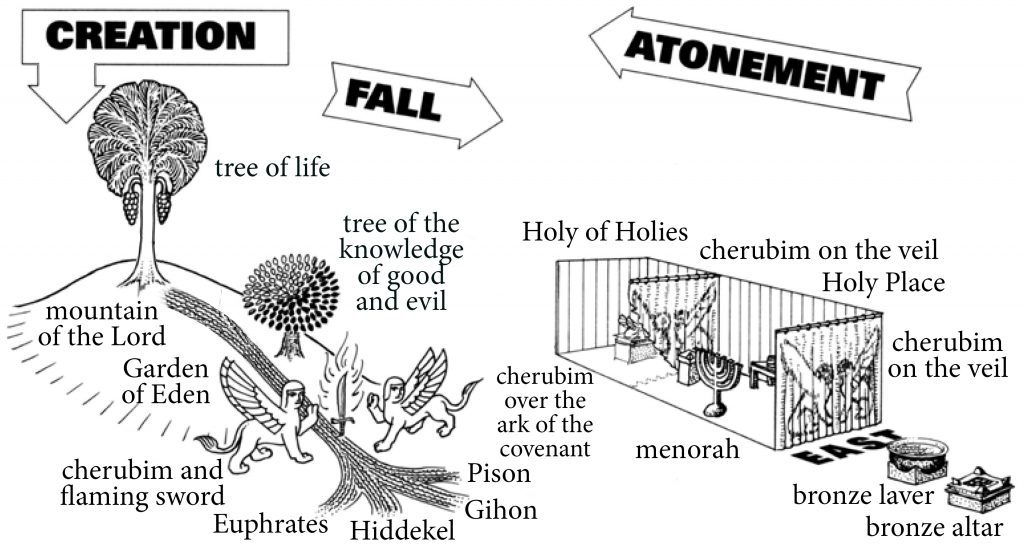
Figure 1. Sacred topography of Eden and the temple. The outbound, down-road journey of the Creation and the Fall at left is mirrored in the inbound, up-road journey of the temple at right.
In modern temples, the posterity of Adam and Eve likewise trace the footsteps of their first parents, both as they are sent away from Eden and also in their subsequent journey of return and reunion (compare John 16:28). About this temple journey, Hugh Nibley commented, “Properly speaking, one did not go ‘through’ the temple—in one door and out another—for one enters and leaves by the same door, but by moving in opposite directions The Two Ways of Light and Darkness are but one way after all, as the wise Heraclitus said: ‘The up-road and the down-road are one’; which one depends on the way we are facing.”17
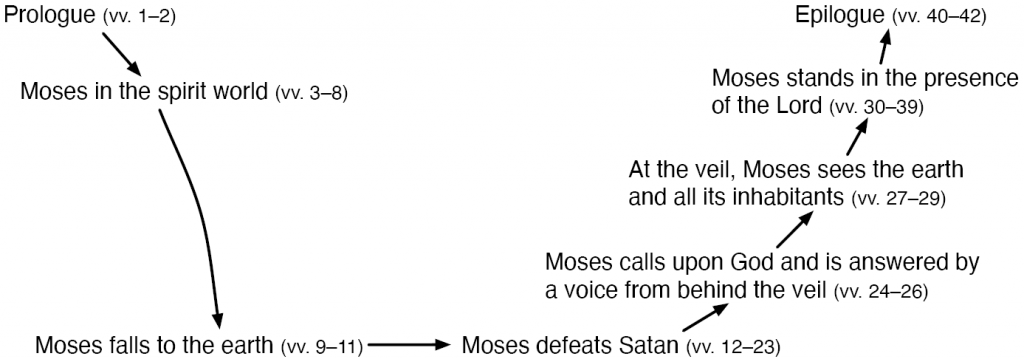
Figure 2. The down-road and the up-road in Moses 1.
In Moses 2–4 is found the story of the “down-road,” while chapters 5–8 follow the journey of Adam and Eve and the righteous branches of their posterity along the “up-road.”18 In Moses 4:31, the “up-road” is called the “way of the tree of life”19—signifying the path that leads to the presence of God and the sweet fruit held in reserve for the righteous [Page 69]in the day of resurrection. The down-road and the up-road are prefigured in the prophetic experience described in Moses 1 (fig. 2), which serves as a prologue to the Book of Moses as a whole.
Consigning specific details of the full pattern to allusions or omitting them altogether, Moses 1 epitomizes the down-road and up-road that was to be followed by Adam and Eve and their descendants. The account fits squarely the pattern of the heavenly ascent literature—not as a description of the sort of figurative ritual journey that is experienced in temple ordinances, but as an actual encounter with God in the “heavenly temple.” Elsewhere I have detailed the resemblances between the spirit world prologue, the fall to earth, the personal encounter with Satan, and the journey of heavenly ascent found both in Moses 1 and also the pseudepigraphal Apocalypse of Abraham.20 Significantly, each of these two accounts also concludes with a vision of the Creation, the Garden of Eden, and the Fall given to the prophet-protagonist.
The historical prologue that precedes in time the stories of the Creation and of the descent of Adam and Eve is given as a flashback in Moses 4:1–4. There the deliberations of the heavenly council that resulted in the acclamation of the “Beloved Son” as the Redeemer and the expulsion of Lucifer from heaven are detailed. The notice given to the reader that the latter “became Satan, yea, even the devil, the father of all lies, to deceive and to blind men, and to lead them captive at his will, even as many as would not hearken unto my voice” (Moses 4:4) should be read as an “announcement of plot”21 for the account of the Fall that immediately follows.
Moses 2–4: The Down-Road
Moses 2: Creation
Latter-day Saints have four basic Creation stories—found in Genesis, Moses, Abraham, and the temple. In contrast to versions of the Creation story that emphasize the planning of the heavenly council or the work involved in setting the physical processes in motion, the companion accounts of Genesis and the Book of Moses provide a structure and a vocabulary that seem deliberately designed to relate the creation of the cosmos to temple symbolism.22
Louis Ginzberg’s reconstruction of ancient Jewish sources is consistent with this overall idea,23 as well as with the proposal that Genesis 1 may have been used as part of Israelite temple liturgy (fig. 3):24
[Page 70]God told [the angels]: On the first day of creation, I shall make the heavens and stretch them out; so will Israel raise up the Tabernacle as the dwelling-place of My glory. On the second day, I shall put a division between the terrestrial waters and the heavenly waters; so will [my servant Moses] hang up a veil in the Tabernacle to divide the Holy Place and the Most Holy. On the third day, I shall make the earth to put forth grass and herb; so will he, in obedience to My commands, . . . prepare showbread before Me. On the fourth day, I shall make the luminaries; so will he make a golden candlestick [menorah] for Me. On the fifth day, I shall create the birds; so will he fashion the cherubim with out-stretched wings. On the sixth day, I shall create man; so will Israel set aside a man of the sons of Aaron as high priest for My service.25

Figure 3. Sacred topography of the temple, with details of the days of Creation.
Carrying this idea forward to a later epoch, Exodus 40:33 describes how Moses completed the Tabernacle. The Hebrew text strongly parallels the account of how God finished Creation.26 Referring to the day the Tabernacle was raised in the wilderness, Genesis Rabbah comments, “It is as if, on that day, I actually created the world.”27 In other words, we are meant to understand that “the Temple is a microcosm of creation, the creation a macro-temple.”28 Or, in the words of Hugh Nibley, that the [Page 71]temple is a “scale model . . . [of] the universe,” a place for taking bearings on the cosmos and finding one’s place within it.29
Moses 3–4: The Garden of Eden and the Fall of Adam
The movements of Adam and Eve between different areas of the Eden “temple” are best understood through a top-down view. The inward/outward movement in figure 4 corresponds to the upward/downward orientation of figure 1. Consistent with strands of Jewish tradition and the views of Ephrem the Syrian, a fourth-century Christian, the tree of knowledge is pictured “as a sanctuary curtain hiding the Holy of Holies, which is the Tree of Life higher up.”30
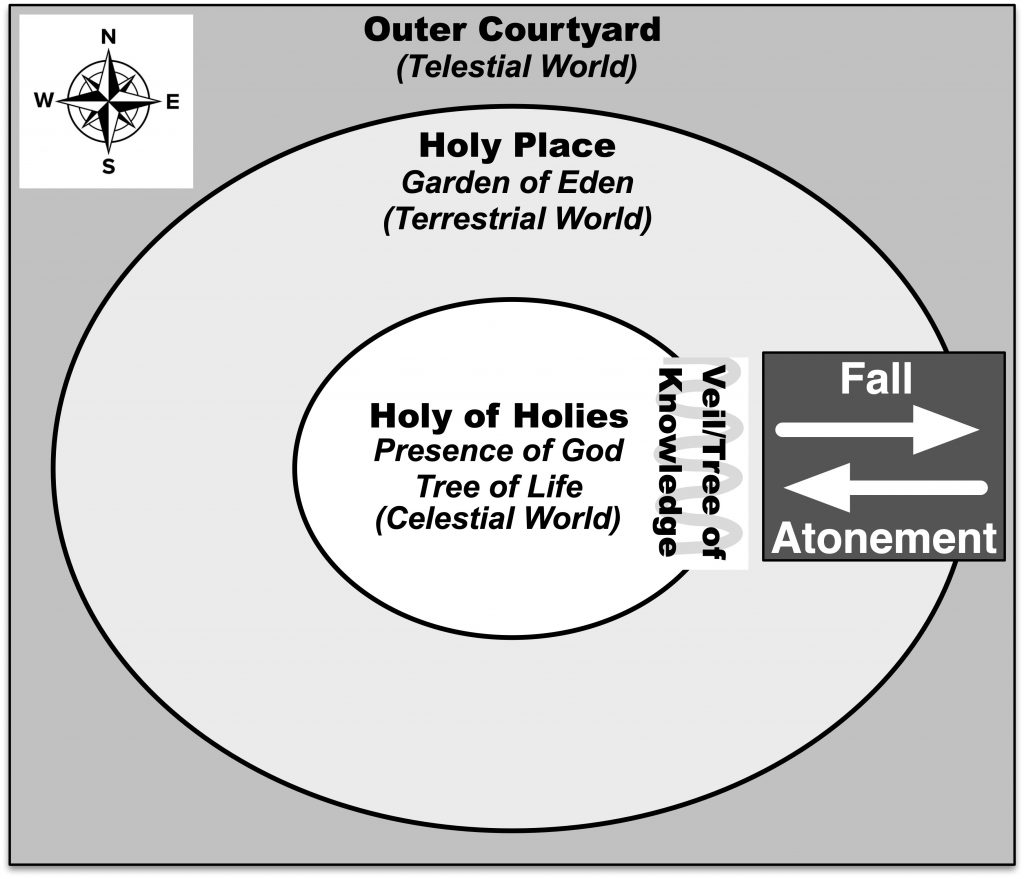
Figure 4. Top-down view of the sacred precincts of the Eden temple.
Western art typically portrays Adam and Eve as naked in the Garden of Eden, and dressed in “coats of skin” after the Fall. However, the Eastern Orthodox tradition depicts the sequence of their change of clothing in reverse manner. How can that be? The Eastern Church remembers accounts that portray Adam as a king and priest in Eden, so naturally he is shown there in his regal robes.31 Moreover, Orthodox readers interpret the “skins” that the couple wore after their expulsion [Page 72]from the Garden as being their own, now fully human, flesh. Gary A. Anderson interprets this symbolism to mean that “Adam has exchanged an angelic constitution for a mortal one”32—in Latter-day Saint parlance, they have lost their terrestrial glory and are now in a telestial state.
Recalling the parallels between the layout of the Garden of Eden and Israelite houses of God, Anderson points out that
the vestments of the priest matched exactly those particular areas of the Temple to which he had access. Each time the high priest moved from one gradient of holiness to another, he had to remove one set of clothes and put on another to mark the change:
(a) Outside the Tabernacle priests wear ordinary clothes. (b) When on duty in the Tabernacle, they wear four pieces of clothing whose material and quality of workmanship match that of the fabrics found on the outer walls of the courtyard (see Exodus 28). (c) The High Priest wears those four pieces plus four additional ones—these added garments match the fabric of the Holy Chamber where he must go daily to tend the incense altar.
In Eden a similar set of vestments is found, again each set suited to its particular space. (a) Adam and Eve were, at creation, vested like priests and granted access to most of Eden. (b) Had they been found worthy, an even more glorious set of garments would have been theirs (and according to St. Ephrem, they would have entered even holier ground). (c) But having [transgressed], they were stripped of their angelic garments and put on mortal flesh. Thus, when their feet met ordinary earth—the realm of the animals—their constitution had become “fleshly,” or mortal.33
According to Brock, the imagery of clothing in the story of Adam and Eve is “a means of linking together in a dynamic fashion the whole of salvation history; it is a means of indicating the interrelatedness between every stage in this continuing working out of divine Providence.” To Latter-day Saints, this imagery also makes clear the place of each priesthood ordinance “within the divine economy as a whole.”34
[Page 73]
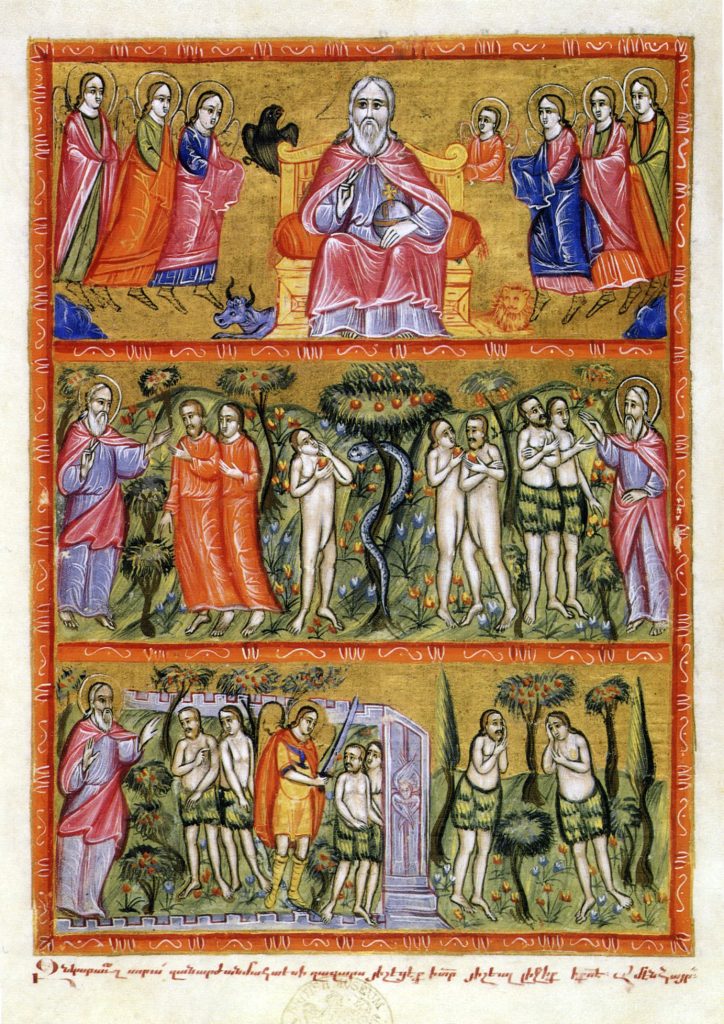
Figure 5. The expulsion of Adam and Eve, 1646.
Moses 5–8: The Up-Road
Covenant Making and Covenant Breaking
The stories in the second half of the Book of Moses also illustrate temple elements, as might be recognized by endowed Latter-day Saints. Discussing Latter-day Saint temple ordinances is a sensitive matter, since endowed Church members agree to keep certain things they learn in the temple confidential. However, the general topic of the temple covenants is not subject to this restriction. For example, in 1977, Elder Ezra Taft Benson, then a member of the Quorum of the Twelve Apostles, outlined these covenants to a general audience as including “the law of obedience [Page 74]and sacrifice, the law of the gospel, the law of chastity, and the law of consecration.”35
Mark J. Johnson has argued that temple covenant-making themes in former times influenced both the structure and the content of the material included in the Book of Moses.36 He observed that the author frequently “stops the historic portions of the story and weaves into the narrative framework ritual acts such as sacrifice, . . . ordinances such as baptism, washings, and the gift of the Holy Ghost; and oaths and covenants, such as obedience to marital obligations and oaths of property consecration.” For example, Johnson goes on to suggest that while the account of Enoch and his city of Zion was being read, members of the attending congregation might have been “put under oath to be a chosen, covenant people and to keep all things in common, with all their property belonging to the Lord.”
An analogous scriptural account that seems to conform with a pattern of covenant-making is discussed in Welch’s analysis of the Sermon on the Mount. In that sermon the commandments “are not only the same as the main commandments always issued at the temple, but they appear largely in the same order.”37 In a similar vein, biblical scholar David Noel Freedman highlighted an opposite pattern of covenant-breaking in the “Primary History” of the Old Testament. He concluded that the biblical record was deliberately structured to reveal a sequence where each of the ten commandments was broken in specific order one by one.38
Figure 6 illustrates the progressive separation of the “two ways” due to analogous sequences of covenant keeping and covenant breaking highlighted in the Book of Moses.39 An interesting aspect of looking at the history of Adam through Enoch as a temple text is that—like the Sermon on the Mount, the Sermon at the Nephite temple, and the biblical text of the Primary History—the series of covenant-related themes unfolds in what appears to be a definite order of progression. Moreover, the ultimate consequences of both covenant-keeping and covenant-breaking are poignantly illustrated at the conclusion of the account: in the final two chapters of the Book of Moses, Enoch and his people receive the blessing of an endless life as they are taken up to the bosom of God (Moses 7:69), while the wicked experience untimely death in the destruction of the great Flood (Moses 8:30).40
[Page 75]
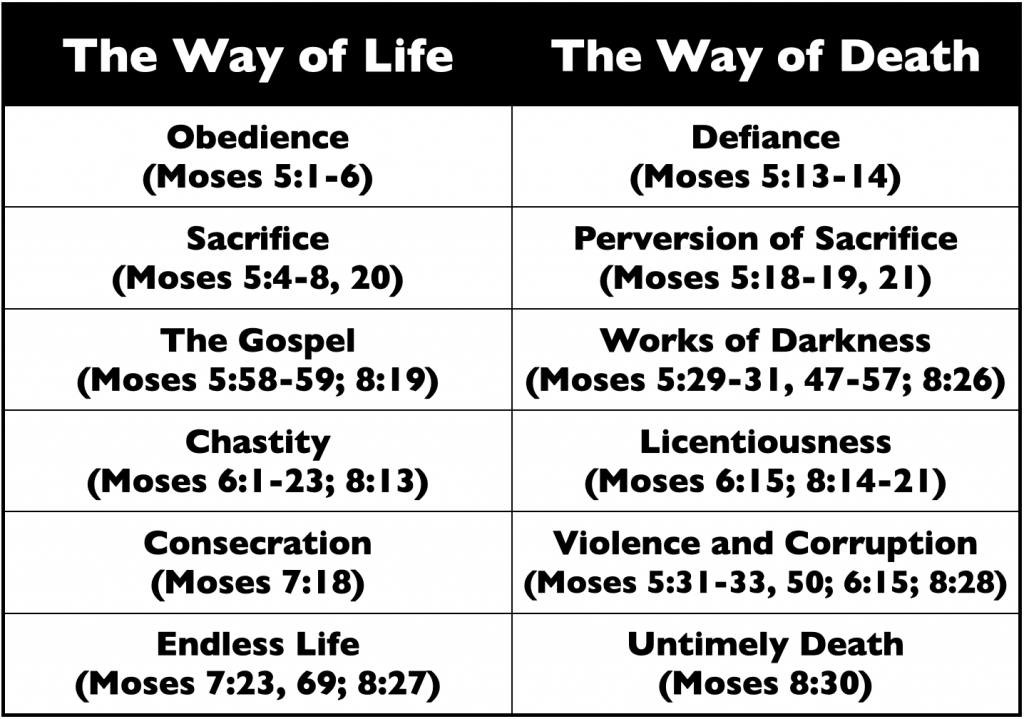
Figure 6. Examples illustrating temple covenant-keeping and covenant-breaking in the Book of Moses.
Moses 5a: Obedience vs. Defiance
Figure 7 depicts the creation of Eve as well as Adam and Eve receiving the “first commandments” (Alma 12:31) that were given before the Fall. Gary Anderson points out an interesting divergence between the Genesis story and the drawing: “Whereas Genesis 2 recounts that Adam was created first (Genesis 2:4–7), given a commandment (Genesis 2:16–17), and only then received a spouse (Genesis 2:19–24), the Hortus Deliciarum has it that Adam was created, then Eve was drawn from his rib, and finally both were given a commandment.41
In the panel at left, a Tree of Life has sprouted human faces resembling Adam and Eve, attesting to ancient traditions about individual premortal existence. This “Tree of Souls” which, in Jewish legend, represented a heavenly “tree of life,” was thought to produce “new souls, which ripen and then fall from the tree into the guf, the Treasury of Souls in Paradise. There the soul is stored until the angel Gabriel reaches into the treasury and takes out the first soul that comes into his hand” so it can be born into mortality.42
[Page 76]

Figure 7. Left: God creating Eve. Right: God instructing Adam and Eve.
In the panel at right, God gestures toward the tree of knowledge in warning as he takes Adam by the wrist.43 At the same time, Eve raises her arm in what seems a gesture of assent to God’s commandment.44 Latter-day Saint scripture recounts that God gave Adam and Eve a set of “second commandments” (Alma 12:37) after the Fall, which included a covenant of obedience. This idea recalls a Christian tradition that God made a covenant with Adam “ere he came out of the garden, [when he was] by the tree whereof Eve took [the fruit] and gave it him to eat.”45 The law of sacrifice, a companion to the law of obedience, was also given to Adam and Eve at this time, before they came to live in the mortal world.46
Moses 5:1–6 highlights the obedience of Adam and Eve to these “second commandments” (Alma 12:37) by enumerating their faithfulness to each of them. Adam, with his fellow-laborer Eve, began to “till the earth, and to have dominion over all the beasts of the field, and to eat his bread by the sweat of his brow” (Moses 5:1; compare similar tilling by King Benjamin and his people following their covenant-making, Mosiah 6:6–7). Eve fulfilled the commission she had received in the Garden of Eden and “bare . . . sons and daughters, and they began to multiply and to replenish the earth” (Moses 5:2). Likewise, “Adam was obedient unto the commandments of the Lord” in keeping the law of sacrifice and offering “the firstlings of their flocks” (Moses 5:5).
[Page 77]
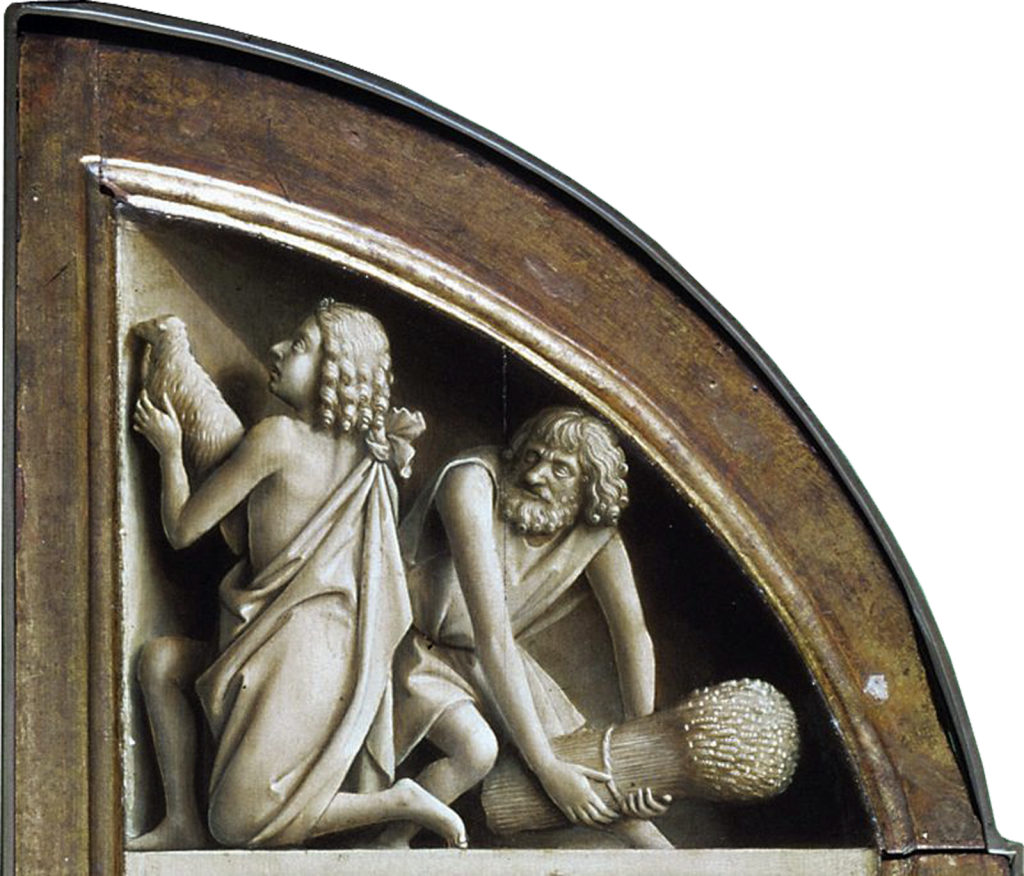
Figure 8. Jan van Eyck (ca. 1395–1441), The offering of Abel and Cain, 1425–1429.
Later, in defiant counterpoint, Satan came among the children of Adam and Eve co-opting their allegiance to God and demanding they obey him instead: “he commanded them, saying: Believe it not; and they believed it not.” Thenceforth, many of them openly demonstrated that they “loved Satan more than God,” becoming “carnal, sensual, and devilish” (Moses 5:13).
Moses 5b: Sacrifice vs. Perversion of Sacrifice
Once Adam and Eve had passed their initial test of obedience to the laws they had been given in the Garden of Eden, God, seeing that it was “expedient that man should know concerning the things whereof he had appointed unto them[,] . . . sent angels to converse with them . . . [and] made known unto them the plan of redemption” (Alma 12:28–30). To Adam was explained that the law of sacrifice “is a similitude of the sacrifice of the Only Begotten of the Father, which is full of grace and truth” (Moses 5:7). Abel followed the pattern of his father in perfect obedience to God and offered a lamb in sacrifice (Moses 5:20). By way of contrast, Cain, at the command of Satan, “offered the fruit of the ground as a sacrifice, which was not symbolic of Christ’s great act of redemption.”47 Speaking of the reason Cain’s sacrifice was rejected, Joseph Smith explained that “ordinances must be kept in the very way [Page 78]God has appointed,”48 in this case by “the shedding of blood . . . [as] a type, by which man was to discern the great Sacrifice which God had prepared.”49
Moses 5c: The Gospel vs. Works of Darkness
Moses 5:58 tells how through Adam’s effort “the Gospel began to be preached, from the beginning.”50 Similar to the story of the three envoys described in Mandaean tradition,51 Adam and Eve were tutored by holy messengers (Moses 5:7–8, 58; Doctrine and Covenants 29:42). They in turn “made all things known unto their sons and their daughters” (Moses 5:12). The mention of the Holy Ghost falling upon Adam (Moses 5:9) carries with it the implication that he had at that point already received the ordinance of baptism (Moses 6:64), something that might have logically occurred soon after the angel’s explanation of the meaning of the law of sacrifice (Moses 5:6–8). The ordinance of baptism was followed by additional instruction concerning the plan of salvation given “by holy angels . . . and by [God’s] own voice, and by the gift of the Holy Ghost” (Moses 5:58; compare Moses 6:52–64). It is implied that bestowals of divine knowledge, the making of additional covenants, and the conferral of priesthood accompanied these subsequent teachings (Moses 6:67–68).
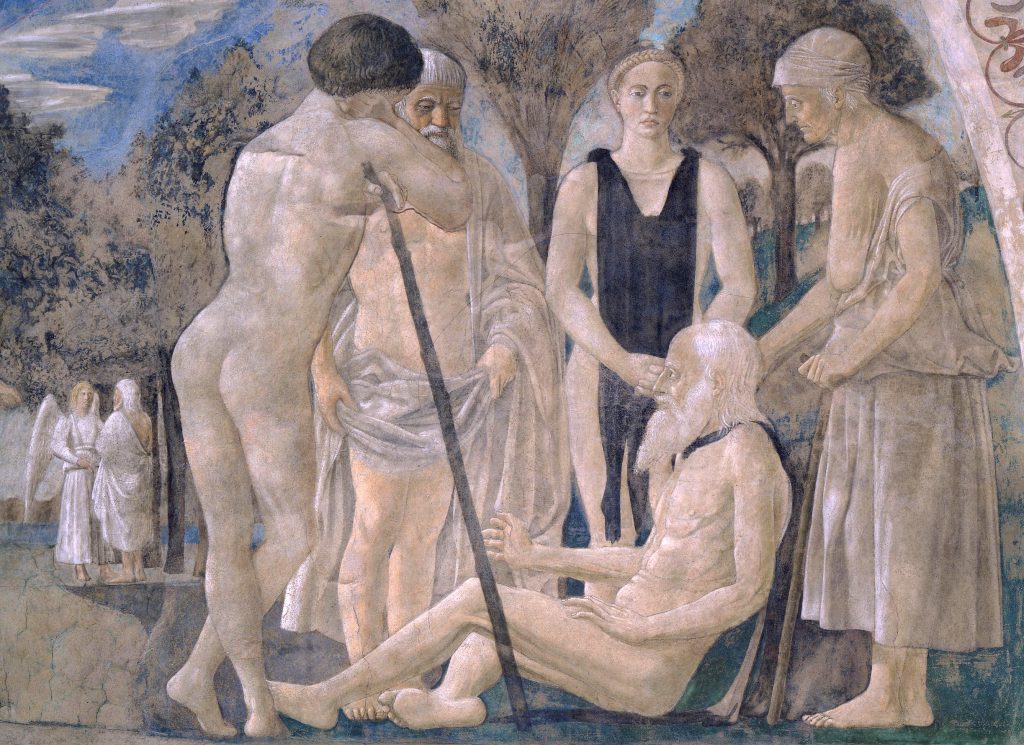
Figure 9. Piero della Francesca (ca. 1420–1492), Adam and His Children, ca. 1447–1466.
[Page 79]The Book of Moses records that, despite Adam’s efforts to the contrary, “works of darkness began to prevail among all the sons of men” (Moses 5:55). Rejecting the covenants, the ordinances, and the universal scope of the brotherhood of the gospel, they reveled in the exclusive nature of their “secret combination,” by whose dark arts “they knew every man his brother” (Moses 5:51), and they engaged in “wars and bloodshed[,] . . . seeking for power” (Moses 6:15).
Moses 6: Chastity vs. Licentiousness
The law of chastity is not mentioned specifically in the Book of Moses, but this teaching is implied by the way the book values the paradigm of orderly family lines in contrast to problems engendered by marrying outside the covenant. Moses 6:5–23 describes the ideal family order established by Adam and Eve. A celestial marriage order can also be inferred from Moses 8:13, where Noah and his righteous sons are mentioned. The patriarchal order of the priesthood, “which was in the beginning” and “shall be in the end of the world also” (Moses 6:7; compare Doctrine and Covenants 107:40–41 and Abraham 1:26), is depicted as presiding over a worthy succession of generations, beginning with Seth, who was in the likeness and image of Adam (Moses 6:10), just as Adam and Eve had been made in the image and likeness of God (Moses 6:9, 22).
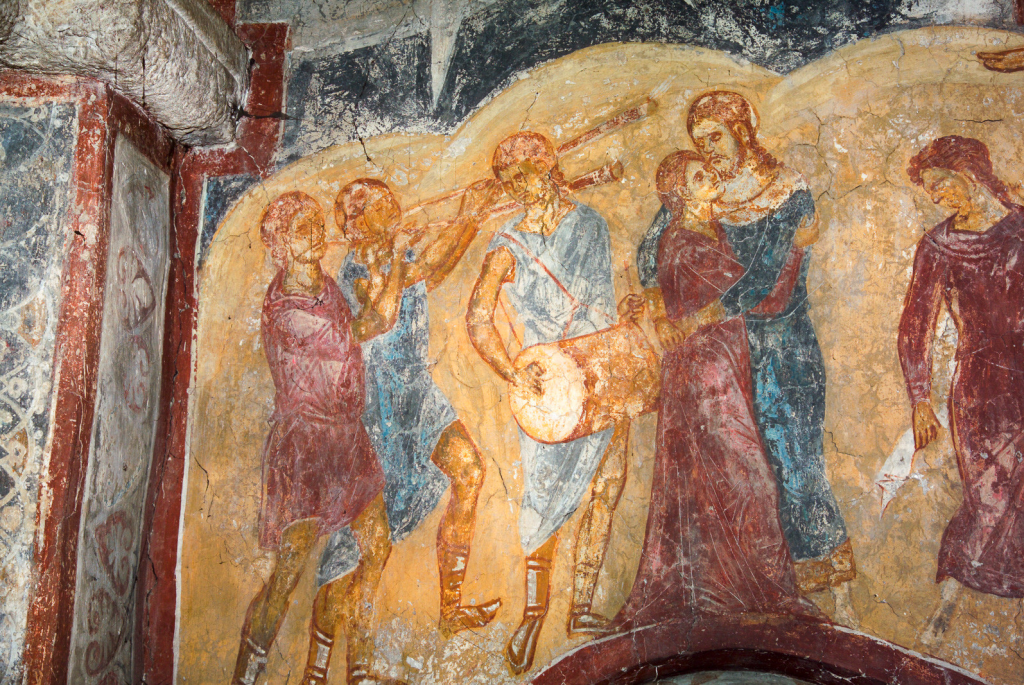
Figure 10. The Sons of God and the Daughters of Men, 1350.
[Page 80]In what may be contrasted with the righteous conduct of “preachers of righteousness” in Moses 6:23, extracanonical traditions speak of all manner of “fornication . . . spread by the sons of Cain.”52 In the Book of Moses, the apogee of wickedness was reached in the days of Noah (Moses 8:13–21). Both the disregard of God’s law by the granddaughters of Noah who “sold themselves”53 in marriage outside the covenant and the subversion of the established marriage selection process54 by the “children of men” are summed up by the term “licentiousness” (from Latin licentia = “freedom,” in a derogatory sense). As for the mismatched wives, Nibley describes how the “daughters who had been initiated into a spiritual order, departed from it and broke their vows, mingling with those who observed only a carnal law.”55 Additionally, the so-called “sons of God”56 in Moses 8:21 (a self-designation made in sarcasm by way of counterpoint to Noah’s description of them as the “children of men” in the preceding verse57) were under condemnation. Though the Hebrew expression that equates to “took them wives” (Moses 8:14) is the normal one for legal marriage, the added words “even as they chose” (or, in Westermann’s translation, “just as their fancy chose”)58 would not have been as innocuous to ancient readers as they seem to modern ones.

Figure 11. Detail of a wall hanging illustrating a Manichaean account of Enoch showing palaces at the top of a tree-like sacred mountain that surround a larger palace of Deity. Corresponding texts seem to describe events similar to the Book of Moses story of how Enoch and his people ascended to the bosom of God.59
[Page 81]Thus, the choice of a mate is portrayed as a process of eyeing the “many beauties who take [one’s] fancy” rather than “discovery of a counterpart, which leads to living as one in marriage.”60 The Hebrew expression underlying the phrase “the sons of men saw that those daughters were fair” deliberately parallels the temptation in Eden: “The woman saw that the tree . . . became pleasant to the eyes.”61 The words describe a strong intensity of desire fueled by appetite, which Robert Alter renders in his translation as “lust to the eyes.”62 In both cases, God’s law is subordinated to the appeal of the senses.63 Richard D. Draper and his coauthors observe that the words “eating and drinking, and marrying and giving in marriage” “convey a sense of both normalcy and prosperity,”64 conditions of the mindset of the worldly in the time of Noah that Jesus said would recur in the last days (Matthew 24:37–39). The wining, dining, courtships, and weddings continue right up to the great cataclysm of the Flood “while superficially all seems well. To the unobservant, it’s party time.”65
Moses 7–8: Consecration vs. Corruption and Violence
Moses 7 describes how Enoch succeeded in bringing a whole people to dwell “in righteousness” (Moses 7:18). In Zion, the “City of Holiness” (Moses 7:19), the people “were of one heart and one mind, and dwelt in righteousness; and there was no poor among them” (Moses 7:18). As the result of living this culminating temple principle, Enoch’s people realized the promise of being “received . . . into [God’s] own bosom” (Moses 7:69).
Just as the life of Enoch can be regarded as a type of the spirit of consecration, so Lamech, who also lived in the seventh generation from Adam, serves as a scriptural example of its antitype. While Enoch and his people covenanted with the Lord to form an order of righteousness to ensure that there would be “no poor among them” (Moses 7:18), Lamech, along with others members of his “secret combination” (Moses 5:51), “entered into a covenant with Satan” (Moses 5:49) to enable the unchecked growth of his predatory order.66 Lamech’s “secret works” contributed to the rapid erosion of the unity of the human family, resulting in a terrifying chaos where “a man’s hand was against his own brother, in administering death” and “seeking for power” (Moses 6:15).
The meanings of the terms corruption and violence, as used by God to describe the state of the earth in Moses 8:28, are instructive. The core idea of being “corrupt” (Hebrew ṣaḥath) in all its occurrences in the story of Noah is that of being “ruined” or “spoiled”67—in other words completely beyond redemption. Like the recalcitrant clay in the hands of the potter of Jeremiah 18:3–4, the people could no longer be formed [Page 82]to good use. The Hebrew term ḥamas (violence) relates to “‘falsehood,’ ‘deceit,’ or ‘bloodshed.’ It means, in general, the flagrant subversion of the ordered processes of law.”68 We are presented with a picture of humankind, unredeemable and lawless, generating an ever-increasing legacy of ruin and anarchy. This description is in stark contrast to the just conduct of Noah (Moses 7:27).
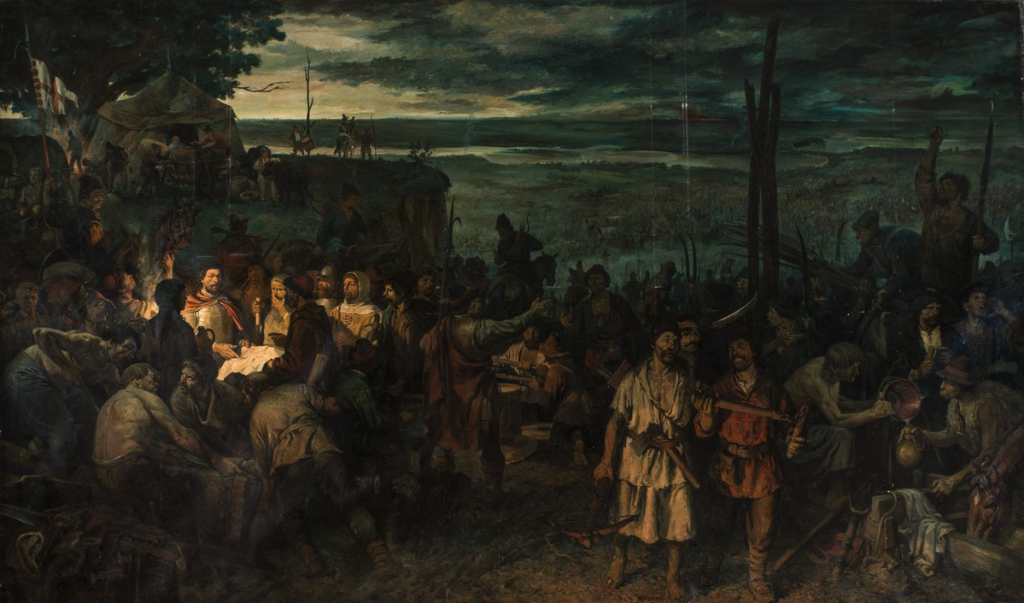
Figure 12. György Kádár (1912–2002) and György Konecsni (1908–1970), Before the Storm (detail), 1951.
Having witnessed the culmination of these bloody scenes of corruption and violence, God concluded to “destroy all flesh from off the earth” (Moses 8:28, 30). Thus, the successive breaking of each of the covenants triggered the same sort of “three-strikes-and-you’re-out” consequence that David Noel Freedman described in his analysis of the Primary History of the Old Testament.
Transgressing vs. Transcending the Divine-Human Boundary
Building on the prior discussion, I will now describe in more detail ways in which the Latter-day Saint Enoch story fittingly serves as the culminating episode of a temple cycle, namely in his transcending the boundary that divides the human from the divine.
In a seminal article relating to the story of Noah, Genesis scholar Ronald Hendel makes the case that one of the most prominent themes in the first eleven chapters of the Bible is “a series of . . . transgressions of [Page 83]boundaries” that had been set up in the beginning to separate mankind from the dwelling place of Divinity.69 Likewise, Robert Oden highlights the “human aspirations to divine status” as an underlying theme in all these stories, and the fact that such status “is ultimately denied them.”70 This general thesis is useful as far as it goes. In the transgression of Adam and Eve and in the stories of the rebellion of Cain, of Lamech, of the “sons of God” who married the “daughters of men,” and of the builders of the Tower of Babel, one cannot fail to observe the common thread of a God who places strict boundaries between the human and the divine.
Surprisingly, however, a significant and opposite general theme has received much less attention by scholars: namely, the fact that within some of these same chapters God is also portrayed as having sought to erase the divine-human boundary for a righteous few, drawing them into His very presence. The prime examples of this motif are, of course, Enoch and Noah, the protagonists of Moses 7–8. Of them, it is explicitly said that they “walked with God”71—meaning, according to some, that these two patriarchs attained “eternal life” while still in mortality.72 Indeed, Enoch and Noah, whose names are mentioned together three times in modern scripture (Moses 8:2; Moses 8:19; JST Genesis 9:21–24), are the only two included in the genealogical list of the patriarchs whose deaths are not mentioned.73 Both “found life amid the curse of death,”74 both were rescued from death by the hand of God,75 and each in his turn was a savior to many others.76
Enoch’s Prophetic Commission
The Book of Moses gives a compelling account of how Enoch was given “power from on high”77 in his call to the ministry. Joseph Smith’s account of Enoch’s prophetic commission begins as follows: “And it came to pass that Enoch journeyed in the land, among the people; and as he journeyed, the Spirit of God descended out of heaven, and abode upon him. And he heard a voice from heaven, saying: Enoch, my son, prophesy unto this people” (Moses 6:26–27).
The closest biblical parallel to the wording of these opening verses is not found in the call of any Old Testament prophet but rather in John the Evangelist’s description of events following Jesus’s baptism. Though a superficial study might explain similar imagery in Moses 6:26–27 and the baptism of Jesus as an obvious case of Joseph Smith’s borrowing from the New Testament, an article by Samuel Zinner argues for the likelihood that the ideas behind the baptismal passages “arose in an Enochic matrix.”78
[Page 84]Next, Enoch was told, “Open thy mouth, and it shall be filled” (Moses 6:32). A parallel to this is with Moses, who was told that the Lord would “be with” his mouth and teach him what to say (Exodus 4:12). Similarly, in 2 Enoch 39:5, Enoch avers, “It is not from my own lips that I am reporting to you today, but from the lips of the Lord I have been sent to you.”79 After the opening of Enoch’s mouth, the Book of Moses says that his eyes were washed and “opened,” actions with unmistakable temple connotations: “And the Lord spake unto Enoch, and said unto him: Anoint thine eyes with clay, and wash them, and thou shalt see.80 And he did so. And he beheld the spirits that God had created; and he beheld also things which were not visible to the natural eye; and from thenceforth came the saying abroad in the land: A seer hath the Lord raised up unto his people” (Moses 6:35–36).

Figure 13. “Anoint thine eyes with clay, and wash them, and thou shalt see.”
As a sign of their prophetic callings, the lips of Isaiah and Jeremiah were touched to prepare them for their roles as divine spokesmen (Isaiah 6:5–7; Jeremiah 1:9). By way of contrast, in the case of both the Book of Moses and 1 Enoch, Enoch’s eyes “were opened by God” to enable “the vision of the Holy One and of heaven.”81 The words of a divinely given song82 recorded in Joseph Smith’s Revelation Book 2 stand in agreement with 1 Enoch: “[God] touched [Enoch’s] eyes and he saw heaven.”83 This divine action would have had special meaning to Joseph Smith, who [Page 85]alluded elsewhere to instances in which God touched his own eyes before he received a heavenly vision.84
It is beyond the scope of this article on temple matters to explore Enoch’s subsequent fulfillment of his prophetic commission in detail, including the many significant resemblances between the Book of Moses and ancient Enoch texts.85 However, with relevance to the present examination of the Book of Moses as a temple text, it is significant that Enoch’s teachings in Moses 6 recapitulate the temple-themed events of Moses 2–5, beginning with the Creation (Moses 6:43–44), the Fall (Moses 6:45–49), and the plan of salvation effected through the Son of Man, who is identified with Jesus Christ (Moses 6:50–57).86
In Moses 6, Enoch’s teachings about the Son of Man culminate in a discussion of the ordinances, with specific details given about Adam’s baptism (Moses 6:64–66) and a brief mention of the highest priesthood order by which Adam became a son of God (Moses 6:67–68), in likeness of the Son of Man Himself.87
As reflected elsewhere in Latter-day Saint teachings, the highest order of the priesthood is known by different names. For example, in the Doctrine and Covenants we read about “they who are priests and kings, who have received of his fulness, and of his glory” (Doctrine and Covenants 76:56). They are described in relation to variously named orders as being “after the order of Melchizedek, which was after the order of Enoch, which was after the order of the Only Begotten Son” (Doctrine and Covenants 76:57).88 Moses 6:67–68 makes it clear that to receive the fulness of the priesthood is to become “a son of God” “after the order of him who was without beginning of days or end of years.”89 Margaret Barker describes how the concept of becoming a son of God can well relate both to ordinances in the earthly temple as well as to actual ascents to the heavenly temple:
The high priests and kings of ancient Jerusalem entered the holy of holies and then emerged as messengers, angels of the Lord. They had been raised up, that is, resurrected; they were sons of God, that is, angels; and they were anointed ones, that is, messiahs.
Human beings could become angels, and then continue to live in the material world. This transformation did not just happen after physical death; it marked the passage from the life in the material world to the life of eternity.90
[Page 86]
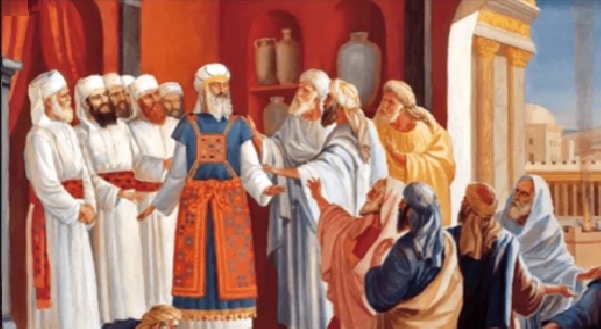
Figure 14. High priests and kings emerged as messengers, angels of the Lord.
Significantly, the last verse of Moses 6 includes the words “and thus may all become my sons.” This statement presages the translation of Enoch and his people, reported in Moses 7.91
The Exaltation of Enoch and His People
The Bible simply relates that “Enoch walked with God: and he was not; for God took him” (Genesis 5:24). However, Moses 7 gives a detailed account of how and why this happened—not only to Enoch but also to a city of his followers. Enoch’s adoption as a son of God, with a right to God’s throne (see Moses 7:59), is described in verses 2–3:92
As I was journeying, and stood upon the place Mahujah, and cried unto the Lord, there came a voice out of heaven, saying—Turn ye, and get ye upon the mount Simeon.98
And it came to pass that I turned and went up on the mount; and as I stood upon the mount, I beheld the heavens open, and I was clothed upon with glory.
[Page 87]

Figure 15. Frederick James Shields (1833–1911): Enoch, 1910.
The pseudepigraphal books of 2 Enoch and 3 Enoch also purport to describe the process by which Enoch was “clothed upon with glory” in some detail. As a prelude to Enoch’s introduction to the secrets of Creation, both accounts describe a “two-step initiatory procedure” whereby “the patriarch was first initiated by angel(s) and after this by the Lord”93 Himself. In the initiation scene described in 2 Enoch, God commanded his angels to “extract Enoch from (his) earthly clothing. And anoint him with my delightful oil, and put him into the clothes of my glory.”94 Philip S. Alexander speaks of this event as an “ontological transformation which blurred the distinction between hu-man and divine,” amounting to “deification.”95 In the Book of Moses, Moses underwent a similar transformation (see Moses 1:2, 11, 13–15, 18, 25, 31). By way of explanation, Moses said that if he had seen God without such a change, he would have “withered and died in his presence; but his glory was upon me; and . . . I was transfigured before him” (Moses 1:11). After Enoch was changed, he is said to have resembled God so exactly that he was mistaken for him.96
Summarizing the ancient Jewish literature relevant to this passage, Charles Mopsik concludes that the exaltation of Enoch is not meant to be seen as a unique event. Rather, he writes that the “enthronement of Enoch is a prelude to the transfiguration of the righteous—and at their head the Messiah—in the world to come, a transfiguration that is the restoration of the figure of the perfect Man.”97
In Latter-day Saint theology, such a transfiguration is not the result of an arbitrary, capricious act of God but rather a sign of love and trust made in response to individuals’ demonstration of their determination to serve God “at all hazard.”98 Only such individuals will be privileged to hear the solemn, personal oath from the Father Himself that they shall obtain the fulness of the [Page 88]joys of the celestial kingdom forever and ever (2 Nephi 31:20).99 For example, although Abraham previously had received the blessings of patriarchal marriage and then had been made a king and a priest under the hands of Melchizedek (Genesis 14:17–24; JST Genesis 14:25–40), Abraham’s “election sure” came only afterward, when he demonstrated his willingness to sacrifice his son Isaac.100

Figure 16. Linda McCarthy (1947–), The City of Enoch, 2002.
This total dedication of oneself to the interests of God and fellow man, the complete emptying of selfishness from the heart and the concomitant replenishment of the soul with pure love in sympathetic union with the Divine, is the essence of the final and most challenging of the temple covenants, the law of consecration—the giving of oneself and one’s all to the purposes of God and the blessing of humankind, in similitude of the great Redeemer. According to Terryl and Fiona Givens, the experience of Enoch as part of his grand vision in Moses 7 is a compelling demonstration “of what the actual process of acquiring the divine nature requires Enoch is raised to a perspective from which he sees the world through God’s eyes.”101 Moses 7:41 reads, “And it came to pass that the Lord spake unto [Page 89]Enoch, and told Enoch all the doings of the children of men; wherefore Enoch knew, and looked upon their wickedness, and their misery, and wept and stretched forth his arms, and his heart swelled wide as eternity; and his bowels yearned; and all eternity shook.”
Here is imagery that foreshadows the Atonement of Jesus Christ as described in a later revelation of Joseph Smith: “He that ascended up on high, as also he descended below all things, in that he comprehended all things, that he might be in all and through all things, the light of truth” (Doctrine and Covenants 88:6). When an agonized Joseph Smith pleaded for an end to his sufferings in Liberty Jail, he was gently rebuked in a reminder of the agonies of his Lord: “The Son of Man hath descended below them all. Art thou greater than he?” (Doctrine and Covenants 122:8). Here the heights of greatness are equated with the utter depths of lowliness and sorrow (compare Matthew 18:4; 23:11). Since Christ was “made perfect” “by the things which he suffered” (Hebrews 5:8, 9), so Enoch “could not be made perfect” “without sufferings.”102
Remarkably, Enoch succeeded in bringing a whole people to be sufficiently “pure in heart” (Doctrine and Covenants 97:21) to live the law of consecration fully. In Zion, the “City of Holiness” (Moses 7:19), the people “were of one heart and one mind, and dwelt in righteousness; and there was no poor among them” (Moses 7:18). In the end, “Enoch and all his people walked with God, and he dwelt in the midst of Zion; and it came to pass that Zion was not, for God received it up into his own bosom; and from thence went forth the saying, Zion is Fled” (Moses 7:69).103
Conclusion
The brief and tentative arguments outlined in this chapter call for more careful and sustained examination of the entire Book of Moses as a temple text. For Latter-day Saints who, like Hugh Nibley, believe Joseph Smith’s teachings that the essential elements of the Latter-day Saint temple ordinances “are as old as the human race,”104 the presence of a temple-themed story cycle in the Book of Moses raises the question of whether an earlier version of a work containing stories similar to this book of scripture could have been “ritually understood and transmitted”105 as part of an ancient temple liturgy, with some details omitted or left as allusions in the version of the text that has come to us.106 Even those who study those aspects of Latter-day Saint temple rituals that seem to be of more recent origin may find the correspondences between elements of ancient temple worship described in the Book of Moses and modern Latter-day [Page 90]Saint rituals to be of interest. The results of the present exploration provide a partial explanation of how Joseph Smith received his tutoring in temple and priesthood themes.107
Speaking personally, I find these and other evidences convincing reasons to conclude that the Book of Moses and others of Joseph Smith’s early revelations108 presuppose a detailed understanding of the covenants and sequences of blessings associated with current forms of Latter-day Saint temple worship. The Book of Moses was revealed to Joseph Smith in 1830, more than a decade before he began to teach them in ritual plainness to the Saints in Nauvoo. It seems that he knew early on much more about these matters than he taught publicly, problematizing the view that the temple endowment was simply an invention of the final few years of his life.109
Acknowledgments
This chapter is an updated and expanded version of “The LDS Story of Enoch as the Culminating Episode of a Temple Text.” BYU Studies Quarterly 53, no. 1 (2014): 39–73. https://scholarsarchive.byu.edu/byusq/vol53/iss1/5/ (accessed July 8, 2021). I appreciate the kindness of David J. Larsen, Danel Bachman, David Calabro, Jared Ludlow, Chris Miasnik, Jacob Rennaker, Stephen D. Ricks, John S. Thompson, John W. Welch, and anonymous reviewers in providing helpful comments and suggestions. I also extend my thanks to Roger Terry and Tim Guymon for their expert assistance with technical editing and the final preparation of the previously published version of this chapter.
[Page 91]Notes on Figures
Figure 1. Modified from the original illustration to show the Tree of Life at the very top of the mountain of the Lord. On the rationale for this modification, see Jeffrey M. Bradshaw, “The Tree of Knowledge as the Veil of the Sanctuary,” in Ascending the Mountain of the Lord: Temple, Praise, and Worship in the Old Testament, ed. David Rolph Seely, Jeffrey R. Chadwick, and Matthew J. Grey (Provo, UT: Religious Studies Center, Brigham Young University, 2013), 49–65, https://rsc.byu.edu/ascending-mountain-lord/tree-knowledge-veil-sanctuary; https://www.youtube.com/watch?v=LfIs9YKYrZE (accessed June 21, 2021). Original drawings published in Donald W. Parry, “Garden of Eden: Prototype Sanctuary,” in Temples of the Ancient World, ed. Donald W. Parry (Salt Lake City: Deseret Book, 1994), 126–51; see pp. 134–35. Courtesy of the Neal A. Maxwell Institute for Religious Scholarship. A similar visual concept was published earlier in Richard Neitzel Holzapfel and David Rolph Seely, My Father’s House: Temple Worship and Symbolism in the New Testament (Salt Lake City: Bookcraft, 1994), 17–19. A similar visualization was reused without attribution in Randall Price, Rose Guide to the Temple (Torrance, CA: Rose Publishing), 2012, 7–9.
Figure 2. Figure © Jeffrey M. Bradshaw. Published in Jeffrey M. Bradshaw, David J. Larsen, and Stephen T. Whitlock. “Moses 1 and the Apocalypse of Abraham: Twin Sons of Different Mothers?,” in this proceedings.
Figure 3. Figure © Jeffrey M. Bradshaw. Adapted from figure 1.
Figure 4. Figure © Jeffrey M. Bradshaw. Concept inspired by Gary A. Anderson, The Genesis of Perfection: Adam and Eve in Jewish and Christian Imagination. Louisville, KY: Westminster John Knox Press, 2001, 80.
[Page 92]Figure 5. From the New Julfa (Isfahan) Bible. Courtesy of the British Library, with the assistance of Sandra Powlette. Published in Vrej Nersessian, Treasures from the Ark: 1700 Years of Armenian Christian Art. London, England: The British Library, 2001, 219. https://www.getty.edu/publications/virtuallibrary/0892366397.html (accessed July 8, 2021).
Figure 6. Figure © Jeffrey M. Bradshaw.
Figure 7. Bibliothèque Nationale de France, Add. 144.a. Fol., with the assistance of Mme Zerkane and Ingrid Appert, as well as the help of Elizabeth Witchell of the Warburg Institute. From Rosalie Green, Michael Evans, Christine Bischoff, and Michael Curschmann, eds. The Hortus Deliciarum of Herrad of Hohenbourg: A Reconstruction. 2 vols. London, England: Warburg Institute, 1979. Vol. 1, Original fol. HD 17r. (Figure 21); see also Vol. 2, p. 31, Figures 17-18, from the Bastard Calques plate 12, tracings of the original made ca. 1840.
Figure 8. Original in the Cathedral of St. Bavon at Ghent, Belgium. http://www.jan-van-eyck.com/offerings-of-cain-and-abel/ (accessed July 8, 2021). For a description, see Jeffrey M. Bradshaw, Creation, Fall, and the Story of Adam and Eve. 2014 Updated ed. In God’s Image and Likeness 1. Salt Lake City, UT: Eborn Books, 2014. https://archive.org/download/140123IGIL12014ReadingS, 322.
Figure 9. From the Legend of the True Cross Fresco Cycle in Arezzo, Italy. Web Gallery of Art. https://www.wga.hu/support/viewer_m/z.html (accessed July 8, 2021).
Figure 10. Mural in the Serbian Orthodox Monastery Viktor Dečani, situated in Kosovo and Metohija, twelve kilometers south of the town of Pec. © Blago Fund, Inc. https://www.blagofund.org/Archives/Decani//Church/Pictures/Fresco_Collections/Genesis/CX4K2236.html (accessed July 8, 2021).
Figure 11. Zsuzsanna Gulácsi, Mani’s Pictures: The Didactic Images of the Manichaeans from Sasanian Mesopotamia to Uygur Central Asia and Tang-Ming China. Nag Hammadi and Manichaean Studies 90. Leiden, The Netherlands: Brill, 2015. Detail of image on p. 439.
[Page 93]Figure 12. Hungarian National Gallery (Magyar Nemzeti Galéria), Budapest, Hungary. https://en.mng.hu/artworks/before-the-storm/ (accessed July 7, 2021).
Figure 13. Published in Fr. John H. Stapleton, A Helping Hand (May 9, 2016). http://theradicalcatholic.blogspot.com/2016/05/a-helping-hand.html (accessed July 7, 2021).
Figure 14. Published in Mapa de Palestina en tiempos de Jesús y su historia, Megareligiones. https://megareligiones.com/c-catolicismo/mapa-de-palestina-en-tiempos-de-jesus/ (accessed July 7, 2021).
Figure 15. Stained glass design for the Chapel of the Ascension, Bayswater Road, London. https://artuk.org/discover/artworks/stained-glass-design-enoch-19147/search/actor:shields-frederick-james-18331911/page/2 (accessed May 2, 2020). Photo credit: Wolverhampton Arts and Heritage.
Figure 16. With kind permission of the artist.
Other scholars have argued for a view of the Book of the Watchers that is more in line with traditional Jewish and Christian theology. For example, in an erudite and nuanced work on “imperialism and Jewish society” that contains arguments on this “complicated, controversial, and poorly understood” issue, Seth Schwartz differs with views that argue for the primacy of 1 Enoch over Genesis. He reads the Book of Watchers "as a dramatic expansion of the [Page 95]biblical Flood story, in which the entire mythological narrative is compressed into the few generations between the descent of the sons of the gods and Noah, with the Flood serving as the final act of the drama.” Minimizing the idea that political developments were the motivation behind the authoring of this account to the same degree they were in the more historical apocalypses (for example, Daniel 7–12), Schwartz notes: “It is only in the first and last chapters of 1 Enoch that the compiler of the collection made an explicit link between the book’s expanded Enoch story and the ‘present.’” Seth Schwartz, Imperialism and Jewish Society, 200 BCE to 640 CE (Princeton, N.J.: Princeton University Press, 2001), 75, 79.
[Page 100]As a prelude to his investiture, a medieval Ethiopian Christian text portrays Adam in the Garden of Eden being commanded by God to enact a series of covenantal gestures in order to “become associated with the Surafel (i.e., the Seraphim) in the mysteries.” Afterward, God arrayed him in glorious clothing from head to foot. Bakhayla Mika’el, The Book of the Mysteries of the Heavens and the Earth and Other Works of Bakhayla Mika’el (Zosimas) (Oxford, England: Oxford University Press, 1934; repr. Berwick, ME: Ibis, 2004), 21–22; compare Muhammad ibn Abd Allah al-Kisa’i, Tales of the Prophets (Qisas Al-Anbiya), trans. Wheeler M. Thackston Jr., Great Books of the Islamic World, ed. Seyyed Hossein Nasr (Chicago: KAZI, 1997), 28–29. In this sense, Adam and Eve, “though naked, [were] still clothed.” St. Ephrem the Syrian, Hymns of Praise, 71.
Despite the fact that the story of Noah is a fitting ending for the Book of Moses as a whole due to its tragic, large-scale depiction of destruction as the consequence of covenant breaking, the fact that the Book of Moses ends where it does is somewhat of a historical accident. For an insightful exploration of alternative ending points, see David Rolph Seely, “The Book of Moses: Exploring the World OF the Text,” in this proceedings
For a discussion of the role of Freemasonry in preparing the Saints for the Nauvoo temple ordinances, see Jeffrey M. Bradshaw, “Freemasonry and the Origins of Modern Temple Ordinances.” Interpreter: A Journal of Mormon Scripture 15 (2015): 159-237. https://journal.interpreterfoundation.org/freemasonry-and-the-origins-of-modern-temple-ordinances/. (accessed May 20, 2016).
For an extensive discussion of temple themes in scripture relating to the doctrine of Christ and the ladder of heavenly ascent (or ladder of virtues), see Jeffrey M. Bradshaw, “Faith, Hope, and Charity: The ‘Three Principal Rounds’ of the Ladder of Heavenly Ascent.” In “To Seek the Law of the Lord”: Essays in Honor of John W. Welch, edited by Paul Y. Hoskisson and Daniel C. Peterson, 59-112 (Orem, UT: Interpreter Foundation, 2017). https://journal.interpreterfoundation.org/faith-hope-and-charity-the-three-principal-rounds-of-the-ladder-of-heavenly-ascent/ (accessed July 29, 2021).



Go here to see the 2 thoughts on ““The Book of Moses as a Temple Text”” or to comment on it.